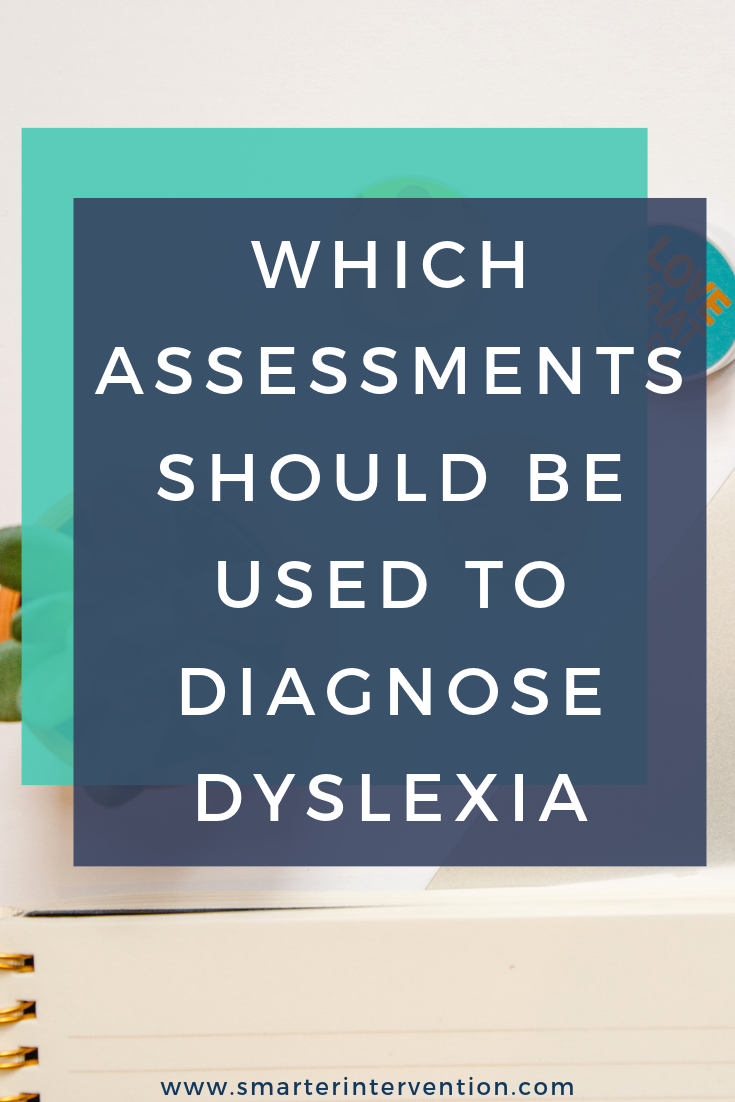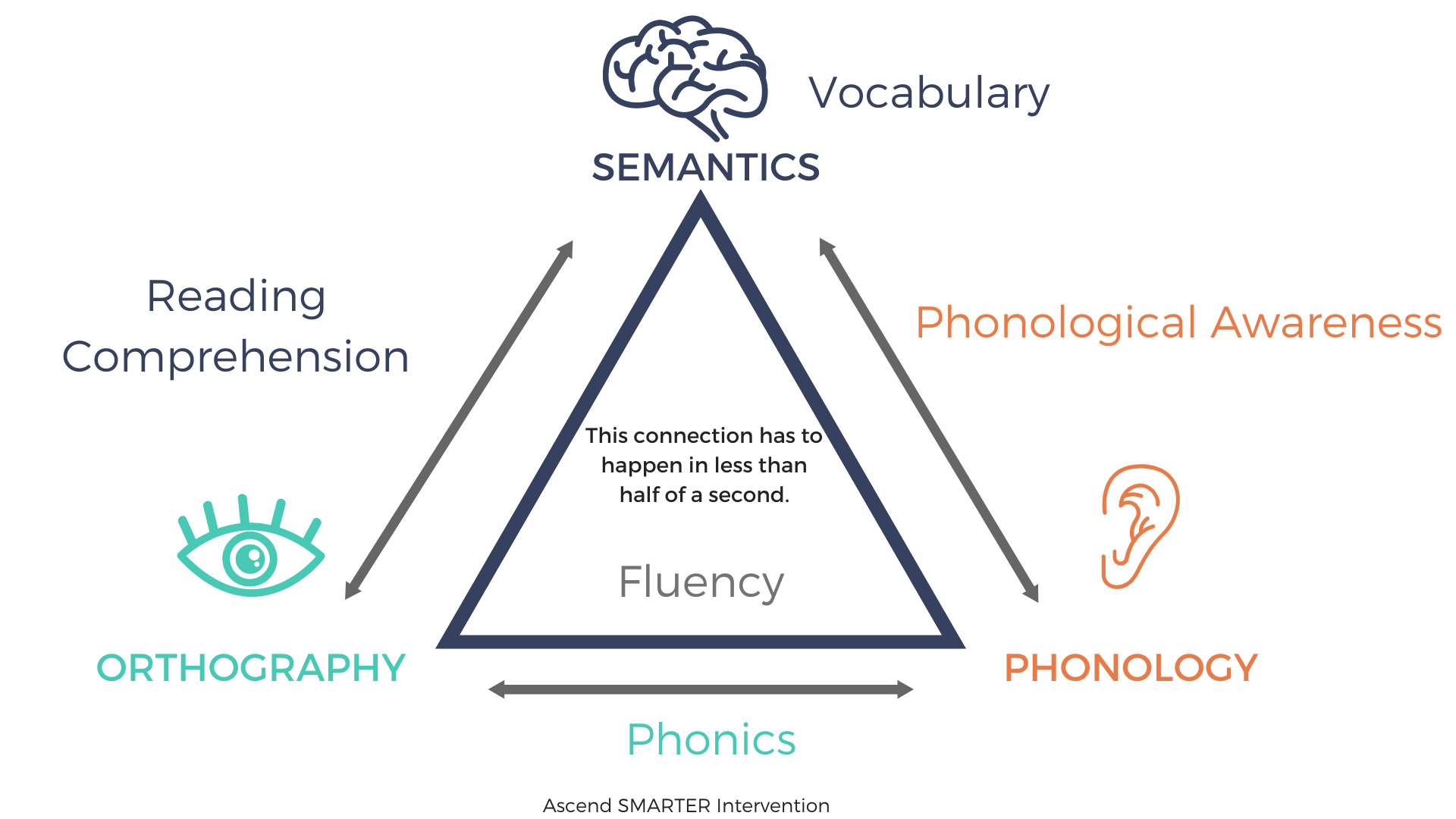Which Assessments Should Be Used to Diagnose Dyslexia?
The process of diagnosing dyslexia can often feel like this huge mysterious task! It is truly a multiple-step challenge for parents, educators, medical professionals, and other professionals working with struggling students. Let’s break this down.
Who Can Diagnose Dyslexia?
The first challenge that parents of struggling students face is finding out “who on earth actually diagnoses dyslexia?!?”
Typically parents first go to the school because they recognize their child is struggling and maybe they’ve done their research and have heard of dyslexia so they ask the school professionals if that might be the cause of their child’s struggle.
But as school professionals - we tense up a bit because (depending on the school) we’re not sure we are even allowed to talk about dyslexia.
So many school-based professionals tell parents “we cannot diagnose dyslexia because it is a medical diagnosis and parents should talk to their doctor.”
However…
More often than not - doctors are confused because this shows up as an educational issue and so the doctor tells parents to talk to the child’s school. Which makes things are confusing and circular…
So, the bottom line…
Schools cannot diagnose dyslexia (check out our blog “Why Can’t My School Diagnose Learning Disabilities” to learn more). They can determine red flags and can qualify students for an Individualized Education Program (IEP) using the term Specific Learning Disability in Reading, but they do not provide a dyslexia diagnosis using ICD-10 codes or DSM-5 codes. That type of diagnosis needs to be provided by a qualified outside professional.
Qualified professionals can include…
Clinical psychologists, neuropsychologists, speech-language pathologists, educational diagnosticians, university-based learning centers, or medical professionals with relevant training in diagnostic assessments for learning disabilities.
What Do We Call Dyslexia in the Schools?
As school professionals, if we are noticing similar struggles when a parent asks for help, we may recommend that the family pursue…
Special Education Eligibility testing
However, there are a lot of misperceptions about what that looks like and what it means to qualify for special education services and so a lot of parents will deny that opportunity because it hasn’t been well explained.
For the parents who do take us up on the offer to complete eligibility testing - they are often confused when terms come back like “Specific Learning Disability - Reading” because even though that term and dyslexia are largely interchangeable (generally speaking) no one has fully explained that for all intents and purposes at the school level, those terms (Specific Learning Disability - Reading & Dyslexia) are the same.
Which Assessments Should Be Used to Diagnose Dyslexia?
So we are going to break this one down in more detail today. This being said, make sure if you are a professional that you have a mentor or supervisor who can help you in making accurate diagnoses. And remember, it is unethical to work outside of your scope or clinical expertise!
1 - Measures of single-word (real word and nonsense word) reading in both timed and untimed measures
Several measures of single-word reading are great options. In our clinic, we use the:
Test of Word Reading Efficiency (TOWRE-2) as a timed measure of single-word reading
Wechsler Individual Achievement Test (WIAT-4) as a timed and untimed measure of single-word reading
Word Identification and Spelling Test (WIST) to break words down by syllable type
There are lots of other great tools out there as well but these are just a few of our favorites!
2 - Measures of ORAL reading fluency
You need to know not only how students are performing on single-word reading but also how they are reading connected text. We need to know not only how quickly a child can read but also how accurately they are reading which means you need to hear them reading out loud! In our clinic, we use the
Gray Oral Reading Test (GORT-5)
We like this test because it doesn’t place unequal favor on how quickly a student reads like so many other reading fluency tests out there. We are equally (if not more) concerned with a student’s accuracy because inaccurate reading impacts reading comprehension.
3 - Measures of reading comprehension versus listening comprehension
The end goal of reading is comprehension. We have to know how well students are comprehending the material they read. Of equal importance is knowing how well students comprehend information that is provided orally. Do students perform better when listening to information or when reading the information? Sometimes they struggle with both which will impact their ability to comprehend any information provided to them which requires specific intervention strategies.
In our clinic, we like the:
Gray Oral Reading Test (GORT-5) to get a measure of reading comprehension when they do not have access to the passage
Wechsler Individual Achievement Test (WIAT-4) to get a measure of reading comprehension when they do have access to refer back to the passage.
There are several other great measures as well, but again these are just our favorites.
4 - Measures of spelling
Many students have a strong visual memory for words as they are reading but struggle to apply these rules at a higher level (writing is the highest level in terms of difficulty in communication). We need to know how students are doing in their single-word spelling ability. In our clinic, we use the:
Wechsler Individual Achievement Test (WIAT-4)
Word Identification and Spelling Test (WIST)
5 - Measures of written content & grammar usage
Just like we need to assess reading at higher levels (fluency and comprehension), we need to assess writing at higher levels. We need to see how students are applying their spelling and use of language constructs in their writing. There are several tests you can use to get an idea of written content and grammar usage. We use the:
Wechsler Individual Achievement Test (WIAT-4) sentence and paragraph-level writing subtests
Test of Written Language (TOWL-4)
6 - Measures of phonological awareness
Dyslexia is specifically defined as difficulty reading or spelling at the single-word level or in connected text that is attributed to a breakdown in phonological (sound structure of the language) or orthographic (visual structure of the language) skills. This means we absolutely must know how students are performing in their ability to interpret the sound structure of the language. We need to know if students can break down sentences, syllables, and sounds and if students can blend or repeat sentences, syllables, and sounds. At the highest level, we need to know if students can manipulate or change syllables and sounds. We like to use the:
Comprehensive Test of Phonological Processing (CTOPP-2)
Phonological Awareness Test (PAT-2NU)
Phonological Awareness Screening Test (PAST)
Wechsler Individual Achievement Test (WIAT-4)
7 - Measures of orthographic competence
Orthographic competence is the ability of a student to see visual symbols of a letter (or number) and quickly attribute meaning to the symbol. We like to use the:
Comprehensive Test of Phonological Processing (CTOPP-2) (Rapid Naming subtests)
Word Identification & Spelling Test (Sound Symbol Knowledge)
Thinking back to that literacy processing triangle, we absolutely must be able to measure all the connection points.
8 - Measures of language processing
The last piece of that literacy processing triangle is semantics or the comprehension of language. This means at the very least we need to have some picture of a student’s expressive and receptive vocabulary and their listening/oral comprehension ability. There are TONS of tests you can use to get a picture of this ability depending on qualifications and background (SLPs can do a deep dive here!) but we like to use the:
Wechsler Individual Achievement Test (WIAT-4) (Receptive and Expressive Language subtests)
So there you have it!
If you are interested in learning more about dyslexia and other learning difficulties, click below to learn more about our Navigating Specific Learning Disabilities training!


